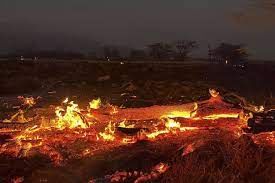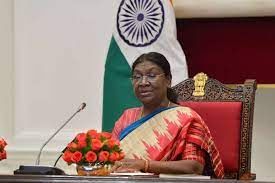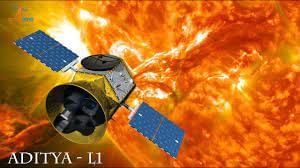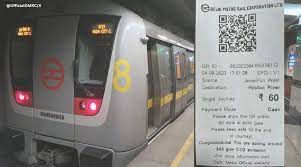UPSC Daily Current Affairs- 15th August 2023 | Current Affairs & Hindu Analysis: Daily, Weekly & Monthly PDF Download
GS-I
National Manuscripts Bill and Cultural Legacy
Subject: Art and Culture

Why in News?
India’s rich heritage of ancient manuscripts, ranging from mathematical texts to religious scriptures, holds invaluable historical and cultural significance.
- The proposed National Manuscripts Bill, 2023, aims to safeguard and document this wealth, ensuring accurate records, accessibility, and conservation.
Unveiling the National Manuscripts Bill
- Bill Objectives: The forthcoming National Manuscripts Bill, 2023, plans to document, catalog, and preserve Indian heritage texts. It is set to be introduced in the Winter Session of Parliament.
- NMA Composition: The bill proposes the formation of a 10-member National Manuscripts Authority (NMA) with representatives from Culture, Finance, and Education ministries, Central Sanskrit University, State representatives, and private agencies.
- Apex Policy Making Body: NMA will oversee digitization, conservation, preservation, editing, and publication of manuscripts. It will function as the apex policy-making body in these areas.
India’s Manuscript Treasure
- Historic Significance: The Bakhshali manuscript, with its early use of zero, symbolizes the intellectual and mathematical achievements of ancient India. Numerous such manuscripts in various scripts exist in libraries worldwide.
- Vast Manuscript Collection: India boasts around 10 million manuscripts in 80 ancient scripts, encompassing themes like history, religion, literature, and more.
- Cultural Diversity: Manuscripts are written on diverse materials and span themes in Sanskrit as well as regional languages.
- Preservation Challenge: The National Mission for Manuscripts (NMM) is tasked with preserving this treasure, an essential endeavor to safeguard cultural and historical identity.
Empowering the National Manuscripts Authority
- Regulation and Investigation: NMA will possess the powers of a civil court to manage manuscript access. It will also have an investigative arm to probe theft and desecration incidents.
- Collaboration: NMA can partner with educational institutions for scholarships and fellowships related to manuscript studies.
- Digital Portal: The NMA will establish a dedicated digital portal for indexing, cataloguing, and sharing manuscript copies.
- Private Ownership: The authority can acquire manuscripts from private owners if their uniqueness and content’s significance warrants it. Compensation would be determined by experts.
Revitalizing Manuscript Studies
- Linking Manuscripts with Livelihood: There is a need to intertwine manuscript studies with livelihood, fostering renewed cultural engagement.
- Global Interest: The proposed survey and documentation of Indian manuscripts abroad are expected to elevate global interest in these texts.
Digital Endeavors by NMM
- Digitization Efforts: The National Mission for Manuscripts has digitized a substantial number of manuscripts, totaling around 3.3 lakh manuscripts and 3.1 crore folios.
- Online Access: While over 1.18 lakh manuscripts have been uploaded, approximately 70,000 are accessible to the public online.
- Other Cultural Institutions: Manuscripts are housed in esteemed institutions like the Sarasvati Mahal Library in Thanjavur, Bhandarkar Oriental Research Institute in Pune, Sampurnanand Sanskrit University in Varanasi, and the Oriental Research Institute in Jammu and Kashmir.
Conclusion
- The proposed National Manuscripts Bill seeks to bridge the past with the present, ensuring the preservation and accessibility of India’s diverse manuscript legacy.
- By establishing the National Manuscripts Authority and promoting digital initiatives, India aims to share its invaluable cultural wealth with the world, fostering a deeper understanding of its historical and intellectual heritage.
Source: The Hindu
Tampara Lake
Subject: Geography

Why in News?
Recently, the National Green Tribunal, Eastern Zone, has directed the Odisha government not to go ahead with ‘illegal’ construction in and around Tampara Lake.
About Tampara Lake:
- It is one of the largest fresh water lakes in the State of Odisha.
- The beautiful lake & the nearby Chilika Lagoon highlight the ecological diversity Odisha is blessed with.
- It supports at least 60 species of birds, 46 species of fishes, at least 48 species of phytoplanktons, and more than seven species of terrestrial plants and macrophytes.
- It is an important habitat for vulnerable species such as Cyprinus carpio, common pochard (Aythya ferina), and river tern (Sterna aurantia).
- It is already placed in the Wetland Atlas prepared by Ministry of Environment, Forest and Climate Change in 2010.
Key facts about National Green Tribunal
- It has been established under the National Green Tribunal Act 2010.
- New Delhi is the Principal Place of Sitting of the Tribunal and Bhopal, Pune, Kolkata and Chennai shall be the other four places of sitting of the Tribunal.
- NGT is mandated to make disposal of applications or appeals finally within 6 months of the filing of the same.
- Composition
- The Tribunal comprises the Chairperson, the Judicial Members, and Expert Members.
- They shall hold office for a term of 5 years and are not eligible for reappointment.
- The Chairperson is appointed by the Central Government in consultation with the Chief Justice of India (CJI).
- A Selection Committee shall be formed by the central government to appoint the Judicial Members and Expert Members.
- There are to be at least 10 and a maximum of 20 full-time Judicial members and Expert Members in the tribunal.
Source: The Hindu
Wildfires in Maui (Hawai)
Subject: Geography

Why in News?
Hawaii is experiencing a number of wildfires, particularly on the islands of Maui and Lahaina.
- Maui is the second-largest island in Hawaii.
What are Wildfires?
- Wildfires are uncontrolled fires that quickly spread over vegetation like forests, meadows, or shrublands.
- These flames may begin spontaneously, such with lightning strikes ,or may be purposefully created by people, as with campfires, dropped cigarettes, equipment sparks, or intentional activities.
- A wildfire can be small and controlled, clearing out underbrush and promoting healthy ecosystem processes, or it can be large and destructive, endangering people's lives, property, and the environment.
Causes
- Natural Causes: It includes volcanic activity and lightning strikes. Maui is home to one of the six active volcanoes of Hawaii. Most of Maui was experiencing severe drought, so dry non-native grasses and vegetation were ready fuel for fires.
- Winds of Hurricane Dora: The fire in Hawaii started in the wild and was carried by the wind of Hurricane Dora (a strong storm in the Pacific Ocean). It majorly hit the islands which caused fire to expand , making it difficult to control.
- Dry weather: It sucks moisture out of vegetation, meaning it can catch alight more easily and then spread.
- Role of Fossil Fuels:
- The burning of fossil fuel which releases large amounts of greenhouse gases into the atmosphere, causing global warming.
- According to the United Nations, there will be an increase of extreme fires globally by up to 14 per cent by 2030, 30 per cent by the end of 2050 and 50 per cent by the end of the century.
- Anthropogenic Causes
- Negligence of Humans: Most wildfires in the US are caused by humans that involve campfires, garbage burning, malfunctioning equipment and burning cigarettes, among others.
- Agriculture expansion: Slash-and-burn agriculture is a major contributor to the global spread of forest fires.
- Poaching: To catch animals, poachers often utilize fire in many places of the world. These fires may become stronger and develop into forest fires.
Implications
- Pollution: Air pollution caused by wildfires is more intense than other forms of air pollution, although it tends to occur over a shorter period of time.
- Wildfire smoke is a complex mixture of fine and coarse particulate matter and gases, including carbon monoxide, nitrogen oxides, volatile organic compounds and air toxics.
- Health hazards: While fire poses a direct risk to people’s life and property, wildfire smoke, and particularly the concentration of PM 2.5, or particles smaller than 2.5 microns, can also affect the respiratory and cardiovascular systems.
- For those already suffering from cardiovascular or respiratory illnesses, there is a risk of flare-ups.
- Wildlife: Wildfires destroy not only flora (tree, herbs, grassland, forbs, etc.) and their diversity but also have considerable long-term negative impact on fauna including wild endangered species.
- They impact the wildlife by burning eggs, killing young animals and driving the adult animals away from their habitat.
- Forests & Soil: Wildfires destroy the organic matter in the soil and expose the top layer to erosion.
- This also leads to the loss of crops. They damage the regeneration in the forests and their productivity.
- Economic: Wildfires can disrupt transportation, communications, power and gas services, and water supply.
Prevention & Mitigation of wildfires
- Prevention:
- Forecasting fire-prone days using meteorological data.
- Clearing camping sites of dried biomass.
- Early burning of dry litter on the forest floor.
- Growing strips of fire-hardy plant species within the forest.
- Creating fire lines (strips in the forest kept clear of vegetation to prevent the fire from spreading) in the forests.
- Controlled burns are also used to prevent forest fires.
- A controlled burn is a wildfire that people set intentionally for a specific purpose.
- Well-thought-out and well-managed controlled burns can be incredibly beneficial for forest management because they can help stop an out-of-control wildfire.
- Mitigation:
- Early detection and quick action by fire-fighting squads are crucial.
- For such activities, the forest departments have a fire protection and fire control unit.
- The best way to control a forest fire is, therefore, to prevent it from spreading, which can be done by creating firebreaks in the shape of small clearings of ditches in the forests.
Source: Indian Express
GS-II
Pradhan Mantri Uchchatar Shiksha Abhiyan
Subject: Government Schemes
Why in News?
14 States and Union Territories which are yet to sign a crucial Memorandum of Understanding (MoU) with the Union Education Ministry, which mandates the implementation of the Pradhan Mantri Uchchatar Shiksha Abhiyan (PM-USHA) .
About Pradhan Mantri Uchchatar Shiksha Abhiyan:
- In the light of the National Education Policy, Rashtriya Uchchatar Shiksha Abhiyan (RUSA) scheme has been launched as Pradhan Mantri Uchchatar Shiksha Abhiyan (PM-USHA).
- It covers government and government-aided institutions of the States and UTs.
- It is a Centrally Sponsored Scheme (CSS).
- PM-USHA would be focusing on the following:
- Equity, Access, and Inclusion: The scheme focuses on equity initiatives and gender inclusion by providing adequate opportunities to underprivileged groups, and it promotes the inclusion of women, minorities, SCs/STs/OBCs, and specially-abled people in higher education, which will help to increase the GER
- Developing Quality Teaching & Learning processes: It would provide the facilities to the institution for upgrading the physical and digital infrastructure and also for the conversion of single-stream higher education institutions (HEIs) into multiple streams institutions
- Accreditation of Non-Accredited Institutions & Improving Accreditation: Accreditation pushes institutions to meet and maintain higher standards in education, in turn, increases trust and confidence in them among the public and boosts accountability
- ICT-based Digital Infrastructure: To ensure greater access to education, there is the significant importance of technology in bridging the language barrier between teachers and students, creating digital libraries, popularizing language learning as well as introducing the Open distance learning (ODL) programs.
- Enhancing Employability through Multidisciplinarity : Collaboration between industry and academia is key to catalysing innovation and growth in career building. PM-USHA will encourage the HEIs to get linked with the Industry and the Market to strengthen skills, innovations, and employability
Source: The Hindu
What is President’s Assent?
Subject: Polity

Why in News?
The President of India granted approval to four significant legislations, encompassing the Digital Personal Data Protection Act and a law related to controlling services in Delhi.
- These Bills, recently endorsed during the Monsoon Session of Parliament, signify the nation’s resolve to adapt its legal framework to contemporary challenges.
Legislations receiving President’s Assent
- The Digital Personal Data Protection Act: This law aims to establish a framework to prevent the misuse of individuals’ data by online platforms. It addresses issues related to data privacy and protection in the digital realm. Tap here to read more.
- The Government of National Capital Territory of Delhi (Amendment) Act: This act provides for the establishment of a three-member authority responsible for handling the transfer and postings of Group A officers under the Delhi government. It pertains to the administration of services in the National Capital Territory of Delhi. Tap here to read more.
- The Registration of Births and Deaths (Amendment) Act: This act designates digital birth certificates as the exclusive conclusive proof of age, which can be used for various purposes. It introduces the concept of digital certificates for births and deaths. Tap here to read more.
- The Jan Vishwas (Amendment of Provisions) Act: This act focuses on promoting ease of business by decriminalizing minor offenses. It introduces amendments to 183 provisions of 42 Acts to reduce legal complexities and facilitate business operations. Tap here to read more.
What is President’s Assent?
- Article 111 of the Indian Constitution governs the President’s assent to bills, which marks the final step in the legislative process.
- The President possesses the power of veto, giving them three options under Article 111 when presented with a bill passed by Parliament:
- Assent: The President can give their approval to the bill, leading to its enactment as a law.
- Withhold Assent: The President can refuse to sign the bill, preventing it from becoming a law.
- Return for Reconsideration: If the bill is not a Money Bill, the President can send it back to Parliament for reconsideration. If Parliament passes the bill again, with or without amendments, the President must give their assent.
Types of Veto
- Absolute Veto: The President exercises this veto when refusing to sign a bill, causing it to be rejected and not turned into law. It is typically used when a Private Member’s Bill is used to pass a law or in the event of a change in the cabinet before the President’s signature, where the incoming government advises against signing the legislation.
- Suspensive Veto: This allows the President to send a bill back to Parliament for further examination or deliberation. If Parliament reapproves the bill with or without amendments, it is adopted as law without the President’s veto.
- Pocket Veto: In this form of veto, the President neither signs the bill nor sends it back to the legislature. The bill remains pending, and its outcome is uncertain. Unlike the U.S. President, the Indian President is not required to return the bill within a specific timeframe.
- Qualified Veto: Unlike other types, this veto can be overridden by the legislature with a higher majority. However, this type of veto is not vested with the Indian President.
[A] Assent to Ordinary Bill:
For an ordinary bill, the President has three options:
- Assent: The President can sign the bill, transforming it into an act.
- Withhold Assent: The President can withhold their approval, resulting in the bill not becoming law.
- Return for Reconsideration: The President can send the bill back to the Houses for reconsideration. The Houses may amend the bill or not before returning it to the President for assent.
[B] Assent to Money Bill:
- The President can give or withhold assent to a Money Bill. However, a Money Bill cannot be returned by the President to the House for reconsideration under the Indian Constitution.
[C] Assent to Constitutional Amendment Bill:
- In the case of Constitutional Amendment Bills, the President’s assent is mandatory.
- The President cannot withhold or return such bills; they become Constitutional Amendment Acts, modifying the Constitution in accordance with their provisions.
Making a Law Operational
- After receiving the President’s assent, a law becomes effective.
- The government drafts guidelines and standards to operationalize the law.
- Implementation requires the issuance of these guidelines.
- Rules should be issued within 6 months of law passage, as recommended by the parliament.
Source: Economic Times
GS-III
Aditya-L1 Mission
Subject: Science and Technology
Why in News?
India’s first solar mission, Aditya-L1, has recently reached the spaceport in Sriharikota.
About Aditya-L1 Mission:
- Aditya L1 is the first space-based Indian mission to study the Sun.
- It will be launched by the PSLV-XL launch vehicle.
- The spacecraft shall be placed in a halo orbit around the Lagrange point 1 (L1) of the Sun-Earth system, which is about 1.5 million km from the Earth.
- A satellite placed in the halo orbit around the L1 point has the major advantage of continuously viewing the Sun without any occultation/eclipses.
- This will provide a greater advantage in observing solar activities and their effect on space weather in real-time.
- The spacecraft carries seven payloads to observe the photosphere, chromosphere and the outermost layers of the Sun (the corona) using electromagnetic and particle and magnetic field detectors.
- Using the special vantage point L1, four payloads directly view the Sun and the remaining three payloads carry out in-situ studies of particles and fields at the Lagrange point L1, thus providing important scientific studies of the propagator effect of solar dynamics in the interplanetary medium.
- The other objectives of Aditya L1 mission will be to understand the drivers for space weather (origin, composition and dynamics of solar wind), and identify the sequence of processes that occur at multiple layers (chromosphere, base and extended corona) which eventually leads to solar eruptive events.
What are Lagrangian points?
- Lagrangian points, also known as Lagrange points or liberation points, are specific locations in space where the gravitational forces of two large bodies, such as a planet and its moon or a planet and the Sun, produce enhanced regions of gravitational equilibrium.
- In these points, the gravitational pull from the two bodies creates a stable or quasi-stable region where a third, smaller object can maintain a relatively constant position relative to the larger bodies.
- There are five primary Lagrangian points, labelled L1 through L5, in a Sun-Earth system.
- L1 (Lagrange Point 1):
- It was found by mathematician Joseph Louis Lagrange.
- It is located about 1.5 million kilometres inside Earth's orbit, between the Sun and the Earth.
- The L1 point of the Earth-Sun system gives a clear view of the sun all the time, without any occultation/ eclipses.
- Once the Aditya L1 mission reaches the L1 Lagrange point, it will be injected to a halo orbit. A halo orbit is a type of orbit that allows the satellite to remain in a stable position between the Earth and the Sun.
Source: Indian Express
CarbonLite Metro Travel
Subject: Science and Technology

Why in News?
The Delhi Metro Rail Corporation (DMRC) recently unveiled a pioneering initiative called CarbonLite Metro Travel to educate passengers about their significant contribution towards reducing carbon emissions by choosing metro trains.
About CarbonLite Metro Travel:
- It is a new initiative of the DMRC to help people understand their contribution to reducing CO2 emissions by opting for metro rail services.
- With this initiative, daily commuters will now be able to understand and learn about the average amount of Carbon Dioxide (CO2) emissions they are decreasing with their simple step of selecting the metro as their means of transportation.
- The amount of CO2 will be calculated based on a comparison to road-based motor vehicles.
- It also aims to persuade commuters to choose an environmentally friendly method of transportation over motorised alternatives, thereby supporting a cleaner and more ecologically balanced environment.
- The initiative is in line with the Government of India’s Mission Lifestyle for Environment (LiFE).
- Who can avail of this feature?
- People travelling with QR code-based tickets will be able to avail of this facility.
- Information about the decrease in CO2 emissions caused by metro travel will be prominently displayed on both mobile QR code tickets and physical tickets.
- Supported by comprehensive research conducted by The Energy and Resources Institute (TERI), Delhi, the initiative underscores that each kilometre travelled by metro train instead of road vehicles results in a noteworthy reduction of 32.38 gram of CO2 emissions.
- The CO2 savings will be displayed and accumulated in the user’s DMRC mobile app for all journeys undertaken by the passenger, further enhancing his/her feel-good factor.
Key Facts about Mission LiFE (Lifestyle for Environment):
- It is an India-led global mass movement to nudge individual and community action to protect and preserve the environment.
- It was launched by the Indian Prime Minister at the 26th UN Climate Change Conference of the Parties (COP26) in Glasgowin November 2021.
- The program hopes to “mobilize one billion Indians as well as people in other countries to become individuals who practice sustainable lifestyles.
- The global movement will showcase sustainable goals and climate actions taken by countries and individuals around the world.
- It makes the fight against climate change democratic, in which everyone can contribute with their respective capacities.
- It emboldens the spirit of the P3 model, i.e., Pro Planet People.
- It functions on the basic principles of ‘Lifestyle of the planet, for the planet and by the planet’.
- It aims at following a three-pronged strategy for changing people's collective approach towards sustainability,
- nudging individuals to practice simple yet effective environment-friendly actions in their daily lives (demand)
- enabling industries and markets to respond swiftly to the changing demand (supply)
- to influence government and industrial policy to support both sustainable consumption and production (policy).
Source: Indian Express
|
44 videos|5271 docs|1113 tests
|
















